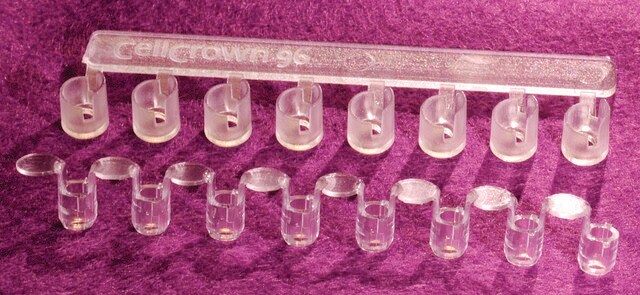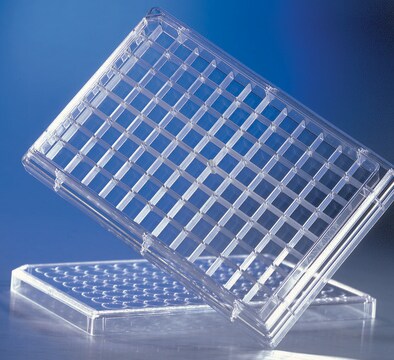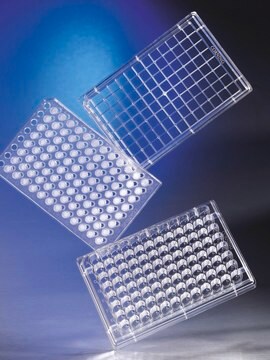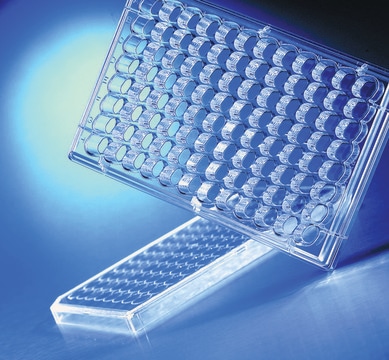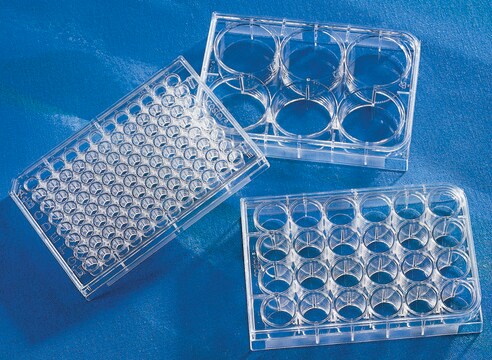推荐产品
生物源
chicken
品質等級
共軛
unconjugated
抗體表格
affinity isolated antibody
抗體產品種類
primary antibodies
無性繁殖
polyclonal
形狀
buffered aqueous solution
物種活性
rat, human, mouse
製造商/商標名
Genway 15-288-21075
技術
western blot: suitable
NCBI登錄號
UniProt登錄號
運輸包裝
wet ice
儲存溫度
−20°C
目標翻譯後修改
unmodified
基因資訊
human ... CXCR4(7852)
免疫原
Immunogen Sequence: GI # 4503175, sequence 6-41
Recombinant chemokine (C-X-C motif) receptor 4 isoform b
應用
Anti-CXCR4 antibody produced in chicken is suitable for western blotting analysis at a dilution of 1:500, for tissue or cell staining at a dilution of 1:200.
生化/生理作用
C-X-C chemokine receptor type 4 (CXCR-4) is a protein encoded by the CXCR4 gene in humans. It is expressed in various cell types and the mechanisms involved in the regulation of its expression are still unknown. CXCR4 is a cofactor for fusion and entry of T cell-tropic strains of HIV-1. It is a chemokine receptor that is overexpressed in certain cancer types and involved in migration toward distant organs. CXCR4 is associated with various functions such as embryo organogenesis, immunological functions and T lymphocyte trafficking. High CXCR4 expression can be helpful in predicting clear-cell renal cell carcinoma (ccRCC). It plays a vital role in modulating cell trafficking in hematopoietic stem cells and clonal B cells. CXCR4 plays an important role in biological processes, as well as in tumorigenesis and the progression of cancer, especially breast cancer. It is an efficient prognostic factor for breast cancer.
外觀
Solution in phosphate buffered saline containing 0.02% sodium azide.
免責聲明
Unless otherwise stated in our catalog or other company documentation accompanying the product(s), our products are intended for research use only and are not to be used for any other purpose, which includes but is not limited to, unauthorized commercial uses, in vitro diagnostic uses, ex vivo or in vivo therapeutic uses or any type of consumption or application to humans or animals.
未找到合适的产品?
试试我们的产品选型工具.
儲存類別代碼
10 - Combustible liquids
水污染物質分類(WGK)
WGK 1
閃點(°F)
Not applicable
閃點(°C)
Not applicable
個人防護裝備
Eyeshields, Gloves, multi-purpose combination respirator cartridge (US)
H An et al.
British journal of cancer, 110(9), 2261-2268 (2014-04-10)
Aberrant CXC chemokine receptor 4 (CXCR4) expressions in malignant tissues have been reported; however, its role in kidney cancer prognosis remains unknown. The aim of this study was to determine the prognostic value of CXCR4 expression in patients with clear-cell
R Chase Cornelison et al.
Scientific reports, 8(1), 17057-17057 (2018-11-20)
Glioblastoma is the most common and malignant form of brain cancer. Its invasive nature limits treatment efficacy and promotes inevitable recurrence. Previous in vitro studies showed that interstitial fluid flow, a factor characteristically increased in cancer, increases glioma cell invasion
Zhigang Zhang et al.
BMC cancer, 14, 49-49 (2014-01-31)
The chemokine receptor CXCR4 plays a significant role in biological processes, as well as in tumorigenesis and the progression of cancer, especially breast cancer. However, the clinical application of CXCR4 for breast cancer prognosis is still very limited. A meta-analysis
Aldo M Roccaro et al.
Blood, 123(26), 4120-4131 (2014-04-09)
The C-X-C chemokine receptor type 4 (CXCR4) plays a crucial role in modulating cell trafficking in hematopoietic stem cells and clonal B cells. We screened 418 patients with B-cell lymphoproliferative disorders and described the presence of the C1013G/CXCR4 warts, hypogammaglobulinemia
M Moriuchi et al.
Journal of immunology (Baltimore, Md. : 1950), 159(9), 4322-4329 (1997-10-31)
The chemokine receptor CXCR4 (also designated fusin and LESTR) is a cofactor for fusion and entry of T cell-tropic strains of HIV-1. CXCR4 is expressed in various cell types; however, the mechanisms involved in the regulation of its expression remain
我们的科学家团队拥有各种研究领域经验,包括生命科学、材料科学、化学合成、色谱、分析及许多其他领域.
联系技术服务部门